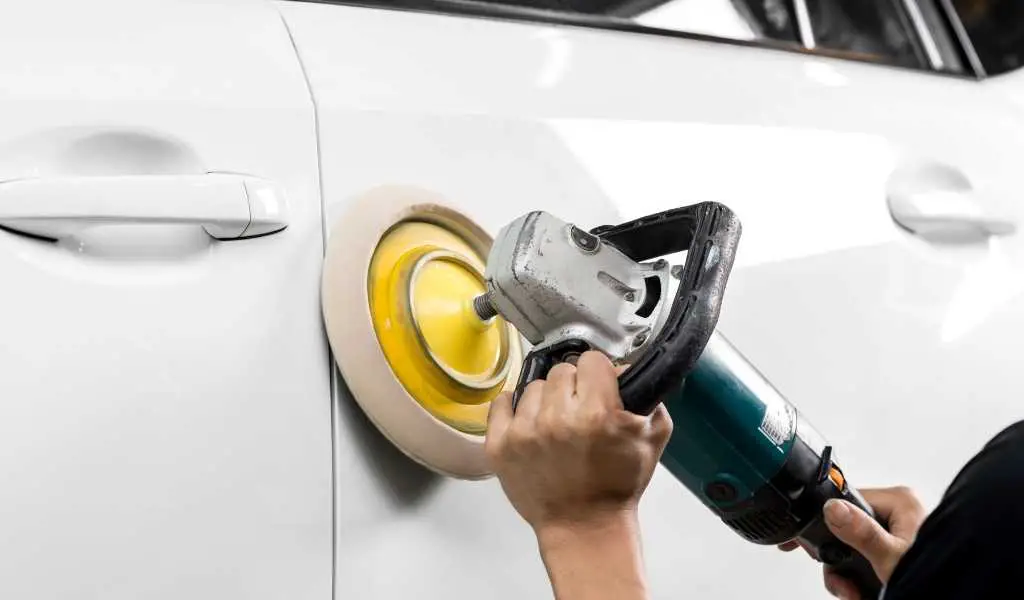Disclosure: As an affiliate I may earn a commission on any qualifying purchases, including those from Amazon, at no extra cost to you -read more
Waxing your car is the final step in detailing your car, and perhaps one of the most important.
The advantages of waxing are always touted by detailers, providing essential protection to the car’s paintwork. But nobody seems to discuss the disadvantages.
In this guide, I’ll give a detailed overview of the pros and cons of waxing your vehicle.
What is Wax?
At room temperature, wax is a solid compound made of hydrogen and carbon, this provides a solid, protective layer over your vehicles surface.
Of course, you can’t apply it whilst it’s hard, so the wax has been manufactured to be more malleable, either as a paste or a liquid.
Originally, wax comes from the trees that produce it to protect their leaves from the sun, Carnauba Wax is a popular natural wax used in car detailing.
However, Synthetic Wax (also called a sealant) is now available that’s made from synthetic chemicals to replicate and improve upon natural wax.
Advantages of Waxing Your Car
Below are some of the key advantages of waxing your vehicle:
1. It protects your car against light scratches
Wax adds a protective layer against light scratches.
This will only protect against light scratches such as rubbing a zip against your car door as you get in and won’t protect against more server types of scratches.
Light scratches will be hardly noticeable at first, but over time they will build up.
That being said, as they are scratches to the clear coat rather than the base layer of paint, can usually be removed with a good polish.
2. Protects against the sun
The long-term effects of the sun on a vehicle can deteriorate the paintwork and decrease your cars resale value.
The UV light in the sun’s rays can expediate the oxidation process and cause the paintwork to fade.
Oxidation is a chemical reaction that happens when oxygen and heat combine and over time will degrade the paintwork causing the glossy look of newer vehicles to become matte and faded.
Wax will provide a protective layer that limits the impact of the sun on your vehicle and keeps it looking newer for longer.
Carnauba wax is particularly good at this as the natural ingredient comes from Carnauba palm trees which are grown in some of the hottest climates.
3. Keeps Your Car Cleaner for Longer
Although a cars surface may look and feel smooth without wax, at a miniscule level there are lots of bumps and ridges which allow the dirt to hold on and cause the car to be dirty.
When you add wax to a vehicles surface, it fills in many of these tiny ridges making a smooth surface which is much harder for dirt particles to attach to.
This means you car will stay cleaner for longer as the dirt simply falls off the smooth surface.
4. Makes Your Car Look Shiny
Once waxed, your new vehicle will look showroom ready with a glossy shine.
It does this by adding a smooth layer over the vehicles surface which better reflects light and gives it the shiny appearance.
How good the shine is will depend on whether you use natural Carnauba wax or Synthetic wax.
Carnauba wax is generally considered to give a deeper shine and better finish than Synthetic wax, however it does not last as long.
5. Makes Your Car Easier to Clean
A layer of wax actually makes it easier to maintain a clean looking vehicle.
This is because the smoother surface makes it hard for dirt particles to find something to stick on to, so they are less likely to cling on to the car.
Not only does this make it less likely to get dirty, but it’s easier to wash as the dirt hasn’t formed strong bonds with the surface.
Where the dirt is stickier, such as bird poo, the particles will stick to the layer of wax as opposed to the clear coat, which makes it much easier to wipe off.
Contrary to popular belief, washing your car will not wash off the wax, providing you proper car shampoo.
6. Causes water to bead and run off
Once your car has been waxed, you’ll notice that water will bead up and run off the surface, there’s no better sight for a detailer.
This is all to do with surface tension because the polar water molecules are not attracted to the nonpolar layer of wax, this low adhesive force causes the water to run away.
Carnauba Wax is particularly good at this thanks to the beading properties found naturally in the Carnauba palm tree.
Why is this important? Well, for one thing, it looks cool, but it’s also suggested to be a good measure against any rust.
There are also some disadvantages to beading which I’ll come on to later.
7. Masks minor imperfections
Most waxes are able to hide minor blemishes in your paintwork to a point where they are no longer visible from a distance.
This is because the wax smoothens out any jagged edges in the paintwork, so the light does not reflect of them as much.
This will of course be temporary as it does not actually fill in the scratch. To get rid of it more permanently you’ll need to use polish and a good buffer.
If the scratches are deeper and go through the clear coat to the base coat, you may need to seek professional help.

Disadvantages of Waxing Your Car
As with everything in life, the pros come with some potential cons.
Overall, the advantages do outweigh the disadvantages, but I’ll run through them nonetheless.
1. Requires proper car wash to maintain
If you’ve not yet switched to a proper car shampoo to wash your car, then it’s a good idea regardless of anything to do with wax.
But if you do start to wax your vehicle, then using a pH neutral car shampoo is essential as it ensures that the protective layer of wax isn’t washed away with the dirt.
2. Water beading can cause water spots
I’ve already mentioned why people like to have water beading, but there’s also people who dislike it, so I’m including both sides of the argument.
Water beading causes the water to sit on the surface, if the water is slightly dirty from containments in the air or surroundings, it can eat away at the clear coat and eventually require buffing to get out.
This can be party solved by regularly drying your vehicle, but the more often you dry your car, the more likely you are to scratch it from drying. Especially if you haven’t washed it beforehand.
3. Takes time to apply correctly
Applying wax correctly takes time. The car should be waxed section by section, with adequate buffing required to get maximum effect of the wax.
A smaller car could take about an hour to wax, whereas a larger vehicle could take 2-3 hours. This does not even account for the cleaning and any polish applied beforehand.
The process can be sped up by using a dual action buffer, but this requires some extra outlay and may not be for beginners.
4. Does not cover up or prevent larger scratches
Many people think that wax is a silver bullet for covering scratches and protecting against future ones, this simply isn’t the case.
Whilst wax might cover minor blemishes, for covering scratches you’ll need to use a polish instead.
Depending upon the cause of the scratch, it may go even deeper than the clear coat and require specialist work.
5. Wax isn’t cheap
The final point to consider is the cost of the wax itself. A good wax doesn’t come cheap and then there’s the cost of a machine buffer on top if you choose to use one.
Wax can cost anything from £6 for a cheap liquid wax, up to £30 for a decent paste.
Of course, this is assuming you are waxing the vehicle yourself, for a professional wax by a detailer, you could end up spending mid-double figures up to three figures depending on your location.
Should I Use Carnauba Wax or Synthetic Wax?
The two main types of wax are Carnauba Wax and Synthetic Wax.
Carnauba Wax is found naturally in the Carnauba palm which grows in warm climates, the wax protects the plant from the sun’s UV rays.
For this reason, it provides superior provides similar protection to vehicles to prevent them from being aged by the sun, it also provides a deep shine.
The other main type of wax is Synthetic Wax, this has been engineered to provide similar effects using synthetic chemicals. It’s also known as sealant.
Synthetic Wax doesn’t provide the same deep shine as Carnauba, but it does last far longer so you don’t need to apply it as frequently.

Kieren is the founder and editor-in-chief of Auto Adviser. Kieren created the site to share his passion of cars that began long before he passed his driving test and is now a recognised contributor in the industry. Outside of cars, Kieren loves drinking coffee and travelling to far-off lands.


